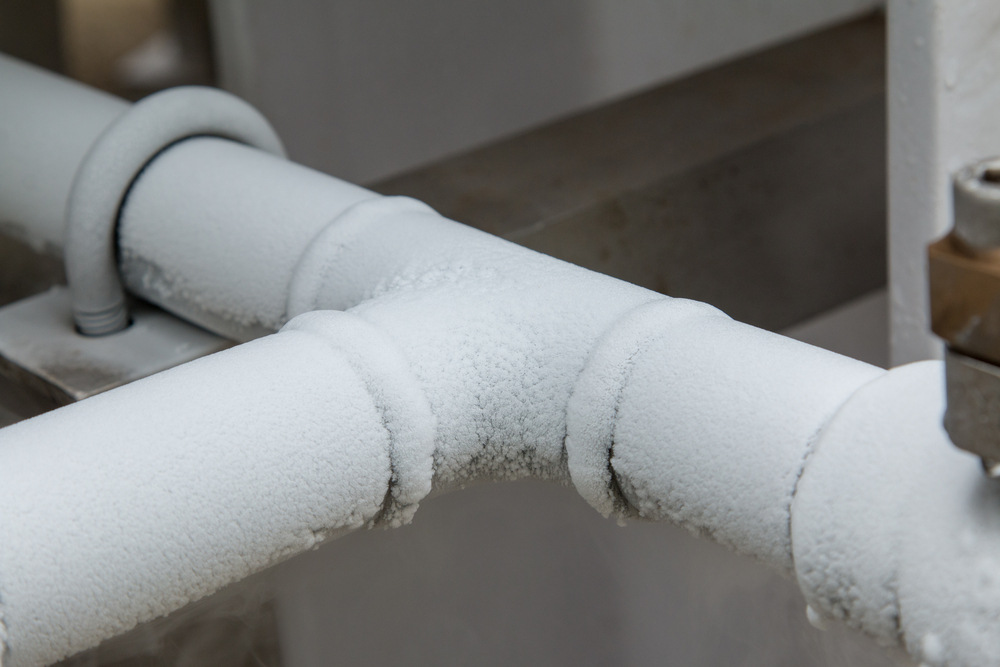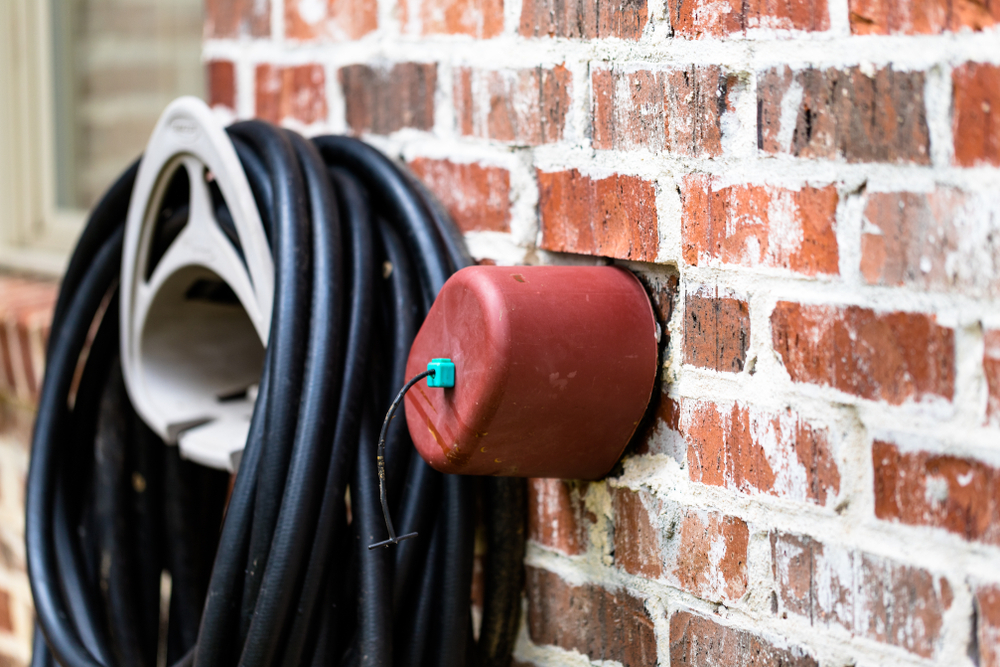Winterizing your outside plumbing becomes a crucial housekeeping chore once the cold season gets underway. Pipes may suffer greatly from freezing conditions, which causes them to rupture and causes major water damage. Not only are burst pipes inconvenient, but they also cost a lot of money to fix; sometimes, expensive water damage restoration projects follow from this. By winterizing your outside plumbing, you will help to avoid these problems and guarantee that your pipes stay in good working order all through the cold.
This thorough guide will walk you through the value of winterizing your plumbing, underline the dangers connected with freezing pipes, and offer you exact procedures to safeguard your outdoor plumbing. Along with professional advice on how to prevent freezing pipes initially, you will also learn what to do should your pipes freeze.
Understanding the Risks of Freezing Pipes
1. How Low Temperatures Affect Pipework
The water within your pipes may freeze when temperatures drop below freezing (32°F or 0°C). Water expands when it freezes, an odd characteristic that results in pipe pressure building-up. Usually not built to resist this abrupt rise in pressure, pipes can fracture or shatter, spewing a flood of water when temperatures once more rise. A burst pipe can spew hundreds of gallons of water, causing expensive damage to furniture and building of your house.
2. Why Outdoor Plumbing Is Vulnerable
Being more exposed to cold than inside pipes, outdoor plumbing is especially prone to freezing. Higher risk pipes exist in unheated or poorly insulated areas such garages, crawl spaces, attics, and basements.
Commonly vulnerable areas include:
- Exposed pipes: Prime candidates for freezing are those running in uninsulated regions or along outside walls.
- Outdoor faucets are directly exposed to cold air, hence water in the pipes going to them is quite likely to freeze.
- Hose bibs: Should you leave hoses connected to outdoor faucets left overnight, the water within the hose could freeze and rear up into the faucet, rupturing the pipe.
First step toward making sure your house stays dry and safe throughout the winter is realizing these hazards.

Winterizing Your Outdoor Plumbing: Action Guide
Winterizing your outdoor plumbing is acting ahead to prevent pipe freezing. Following these guidelines will assist to reduce the chance of expensive repairs and water damage.
1. Turn off the drain remaining water and the outdoor water supply:
Turning off the water supply to outdoor faucets and other exterior water features is one of the best ways you can guard your outdoor plumbing. Frozen water left sitting in the pipes could cause the pipes to break or burst.
Here’s how you can do it:
- Find the shutdown valve for outside plumbing usually found within your house, usually in a utility room, crawl area, or basement. The water supply to every outside spigot is under control by this valve.
- Cut the valve: To cut off water to outdoor pipes, turn the valve clockwise.
- After turning off the valve, open all outdoor faucets to let any last water to flow out. This will stop water from accumulating in the pipes, so avoiding damage by freezing and expansion.
2. Insulate Exposed Pipes with Foam or Heat Tape
Preventing exposed pipes from freezing depends critically on insulating them. Two often used solutions for pipe protection are foam pipe insulation and heat tape.
- Easy to install and offering good defense against freezing, foam pipe insulation Measure your pipes, cut the foam insulation to match, then slip it over the pipe’s exposed areas. Make sure every pipe is completely covered so cold air won’t reach them.
- Particularly in very cold environments, heat tape is a great choice for pipes that run greater freezing risk. By enclosing sensitive pipes with heat tape, one may create a regulated heat source keeping the pipes above freezing temperatures. To guarantee correct installation, closely follow manufacturer directions.
3. Cover Outdoor Faucets with Insulated Covers
During winter, one of the most vulnerable plumbing parts are outside faucets—also called spigots or hose bibs. By keeping cold air from seeping into the faucet and freezing the water inside, insulated faucet covers offer still another degree of protection.
- Get insulated faucet covers from your neighborhood hardware shop to install. These covers fit tightly over outside spigots. Just cover the faucet and follow manufacturer directions on securing it. Some coverings guarantee a tight fit by including elastic bands or drawstrings.
4. Disconnect and Store Garden Hoses
Winter garden hoses left tied to outdoor faucets can cause water to back up into the faucet, freezing and sometimes damaging pipes. Before the first freeze, disconnect all hoses; keep them dry, warmly stored.
- To get hoses ready for storage, hold them straight and let gravity do its job draining any last water from them. Neatly coil the hoses, then keep them in a garage or shed to shield them from UV damage and freezing conditions.
5. Consider Installing Frost-Proof Outdoor Faucets
Frost-proof outdoor faucets are a good purchase if your area suffers severe winters. These faucets retain the water supply farther within the house, away from outside cold temperatures, therefore preventing freezing.
- Longer stems of frost-proof faucets stretch several inches into the warmer part of your house, where the water supply is less prone to freeze. This design keeps water from resting in the pipe section facing outside air.
Further Advice for Winterizing Your Outdoor Plumbing
Apart from the fundamental actions described above, there are various more activities you can do to protect your plumbing throughout the winter. These extra steps will help to guarantee that your pipes stay in good operating order and offer more protection.
1. Keep Garage Door Closed
Keeping the garage door closed will help to maintain warmth and stop the water pipes from freezing if they run through your garage. Rapid lowering of the garage’s temperature by cold air increases the likelihood of frozen pipes.
- Think about insulating your garage door and walls to provide additional safety and aid to keep the inside of the garage constant.
2. Open Cabinet Doors to Allow Warm Air Circulation
If pipes housed behind cabinets—especially in kitchens and bathrooms—are placed along outside walls, they may freeze. Opening cabinet doors in colder months lets warm air from your house flow around the pipes, therefore lowering the freezing risk.
- On really chilly days or evenings, leave the bathroom and kitchen cabinets open to let heat reach the pipes.
3. Set the Thermostat to a Minimum Temperature
In colder months, keeping a constant indoor temperature is absolutely vital. Set your thermostat to a minimum temperature of 55°F (13°C) to avoid your indoor pipes from freezing even if you will be gone from home for a longer length of time.
- Install a programmable thermostat to save energy and allow you to keep a constant temperature. Set it to keep your house sufficiently heated to guard pipes during the coldest of the days.

What to Do If Your Pipes Freeze
Your greatest efforts notwithstanding still run the risk of your pipes freezing during especially severe weather. Follow these instructions right away if you find frost on exposed pipes or that water is not flowing from a faucet.
1. Turn Off the Main Water Supply
Stopping the main water supply comes first if you believe your pipes have frozen. This will stop water from running once the pipes thaw, so preventing a burst pipe flooding your house.
- Usually found in your basement, crawl space, or utility room, the main shutoff valve is closest to your water meter. To turn off the water, turn the valve counter wise.
2. Thaw Frozen Pipes Using a Hairdryer or Heating Pad
Thawing the frozen pipe starts once the water supply is cut off. Heat the frozen segment of the pipe with a heating pad or hairdryer. Work your way along the pipe toward the frozen section starting at the faucet.
- Never use an open flame; defrost pipes using a blowtorch or any open flame runs the danger of damaging the pipe and starting a fire. Follow sensible techniques include a heating pad or hairdryer.
3. If Pipes Have Burst, Shut Off Water and Call a Plumber
Should you find out a pipe has already burst, the matter calls for quick response. Cut off the water to the impacted area, then schedule emergency repairs with a plumber. To hold any leaking water in the interim, use towels or buckets.
Record the destruction. For insurance, snap pictures of the damage and log any repair expenses.
Conclusion
Preventing freezing pipes and avoiding expensive repairs depend on your outside plumbing being winterized. Following the advice in this book can help you reduce the possibility of frozen pipes in the cold season by turning off the water supply, emptying pipes, insulating exposed plumbing, and covering outside faucets.
Apart from these fundamental safety measures, bear in mind to open cabinet doors to distribute warm air, close your garage door, and keep a constant internal temperature. And should your pipes freeze, move fast to thaw them to stop more harm.
Winterizing your plumbing now will save you from big problems and costs down road. Save your pipes to enjoy a winter free from worries.
Plumbing Services CA
https://maps.app.goo.gl/31Yt4rhDrainzNJ4A
(279) 203-0765
https://plumbingservicesca.com/
